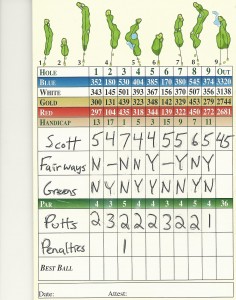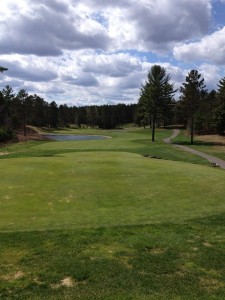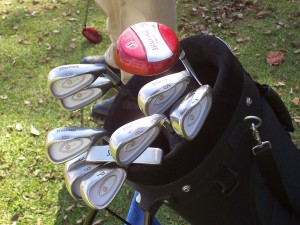It’s fun to watch pro golfers on television attack the pins and setup easy birdies. It would appear they are attacking the pin on every hole. Next time you watch professional golf, pay close attention to your favorite golfer as they complete their round. You will see that they are very selective in which flags they go for and those they do not. On some holes even the pros will avoid danger and hit their approach shot to the safe side of the green, two putt for their par and move on to the next hole.
High handicap golfers need to be even more selective in which pins they choose to go for. High handicappers simply do not have the required consistent accuracy to go for every pin. There’s nothing wrong with going for only some of the flags during a round. In fact, high handicap golfers need to be hitting greens in regulation to setup pars rather than firing at pins to setup birdies.
The ultimate goal of the high handicap golfer is to reach the level of playing bogey golf. Making birdies, while an awesome feeling, has very little to do with reaching this goal. Hitting greens in regulation to make pars is extremely important to offset any double bogies or worse. There is too much risk in aiming at protected pins. Many times pins will be placed on the side of a green protected by water, rough, or sand. Hit your approach shot in the water and you’re risking a blow-up hole – a round killer. Hit your approach shot in the sand or rough and you’re scrambling to make par, most likely looking at a bogey. It’s much more important to hit the safe part of the green in regulation than to shoot for protected pins.
The safest part of most greens is the middle on the side away from trouble. If’s there’s trouble on the right, shoot for the left side of the middle of the green. From here, the goal is to lag putt to avoid three putting the green. Effective lag putting is essential to improving your golf game. Taking protected pins out of play and aiming for the safe area of the green will leave some longer first putts. This is OK as it is much better than missing the green. It does however require that you become an effective lag putter.
One piece of equipment I believe every high handicap golfer should have is a golf GPS system. Knowing the distance to the front and back of every green is critical to hitting more greens. Thinking of the yardage remaining to the hole as a range instead of a single yardage makes you consider every possible club and helps you choose the correct one. Invest in a golf GPS system today if you do not have one.
Hopefully you do not think I’m taking the fun out of the game by suggesting to not go for protected pins. The truth is there will be plenty of holes where the hole is cut in a very favorable area of the green. Be aggressive and take dead aim for these flags. On the holes with protected pins, remove the risk and lower your score by hitting the safe area of the green.




